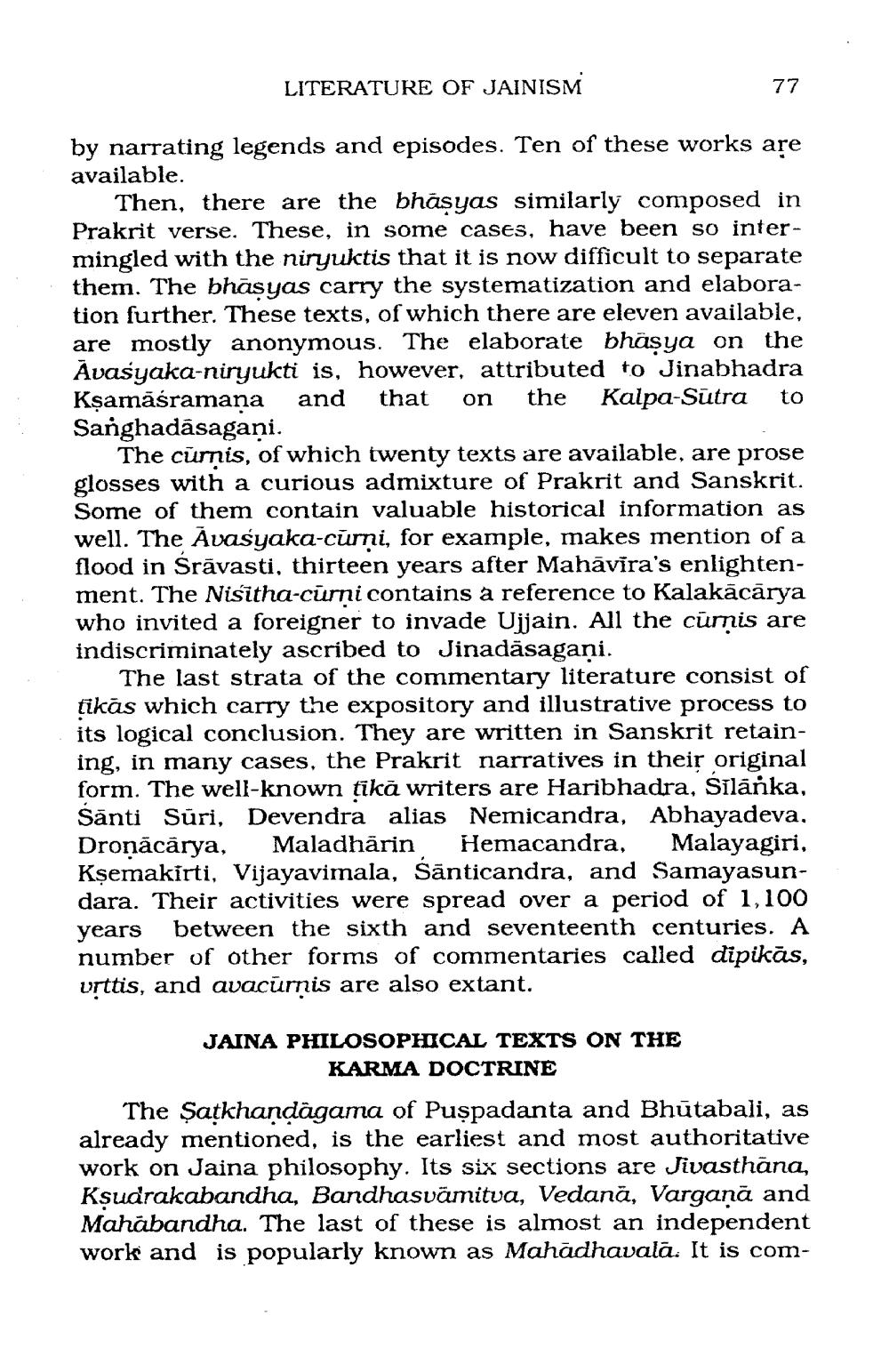________________
LITERATURE OF JAINISM
77
by narrating legends and episodes. Ten of these works are available.
Then, there are the bhāsyas similarly composed in Prakrit verse. These, in some cases, have been so intermingled with the niryuktis that it is now difficult to separate them. The bhasyas carry the systematization and elaboration further. These texts, of which there are eleven available, are mostly anonymous. The elaborate bhâsya on the Āvasyaka-niryukti is, however, attributed to Jinabhadra Kşamāśramana and that on the Kalpa-Sutra to Sanghadāsagani.
The cūrnis, of which twenty texts are available, are prose glosses with a curious admixture of Prakrit and Sanskrit. Some of them contain valuable historical information as well. The Avasyaka-cūrni, for example, makes mention of a flood in Srāvasti, thirteen years after Mahāvira's enlightenment. The Nisitha-cūrņi contains a reference to Kalakācārya who invited a foreigner to invade Ujjain. All the cümnis are indiscriminately ascribed to Jinadāsagani.
The last strata of the commentary literature consist of tikās which carry the expository and illustrative process to its logical conclusion. They are written in Sanskrit retaining, in many cases, the Prakrit narratives in their original form. The well-known tikā writers are Haribhadra, Silanka, Santi Sūri, Devendra alias Nemicandra, Abhayadeva, Dronācārya, Maladhārin Hemacandra, Malayagiri, Ksemakirti, Vijayavimala, Sānticandra, and Samayasundara. Their activities were spread over a period of 1,100 years between the sixth and seventeenth centuries. A number of other forms of commentaries called dipikās, urttis, and avacūrņis are also extant.
JAINA PHILOSOPHICAL TEXTS ON THE
KARMA DOCTRINE The Şatkhandägama of Puşpadanta and Bhūtabali, as already mentioned, is the earliest and most authoritative work on Jaina philosophy. Its six sections are Jivasthāna, Ksudrakabandha, Bandhasvāmitua, Vedana, Vargana and Mahabandha. The last of these is almost an independent work and is popularly known as Mahadhavala. It is com




